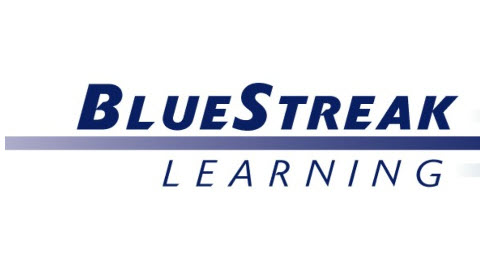In today’s fast-paced business landscape, organizations face the constant challenge of efficiently managing training and development programs across diverse teams and geographical locations.
Streamlining processes to drive compliance, improve workforce productivity, and gain operational efficiency has never been more critical. Training programs, and more importantly, the data they track, should be a key driver in that effort.
This is where LatitudeLearning steps in, offering a robust platform that not only facilitates comprehensive learning management but also excels in integration capabilities, providing unparalleled benefits to OEMs and extended enterprises.
LatitudeLearning stands out as a leading Learning Management System (LMS), designed to meet the unique needs of OEMs and extended enterprises. Its intuitive interface, scalability, and customizable features make it a preferred choice for organizations looking to centralize their training initiatives.
At its core, LatitudeLearning empowers organizations to create, deliver, and track skills-based training programs efficiently. Whether it’s onboarding new employees, driving product support and technology education, ensuring compliance with industry regulations, or upskilling the existing workforce, LatitudeLearning offers the tools and resources to address your diverse learning needs.
Integration That Boosts Productivity
One of the stand-out strengths of LatitudeLearning is its exceptional integration capabilities and experience leveraging training throughout your organization. Which, when done correctly with other enterprise systems and services, serve as the foundation for enhanced efficiency and productivity across your extended partner training enterprise.
Our approach to integration has three key drivers:
- Automation: Integrating the LMS to core authoritative sources within the enterprise to manage organization data, user data, and access controls, so the LMS is never out of sync.
- Analytics and Reporting: Data drives business. Bringing data into the LMS to drive certification and compliance training, or exporting data from the LMS to feed BI and analytics platforms, is a necessity. Using APIs, batch ETL processes, or other services helps to facilitate these integrations. Using training data to drive warranty systems, parts ordering systems, or dealer rewards systems is just the beginning.
- Training at the Point of Need: Using a comprehensive set of interfaces, the reach of the LMS can be extended to provide point of need training validation or training access depending on the use case. This means that a course can be launched from the LMS, with credit earned in the LMS without the student ever seeing the LMS for training.
Any LMS you choose should be able to do these three things. And if it can’t – you might want to rethink what you’re doing.
Why Choose LatitudeLearning?
Our guide reveals how we help you solve all your partner training challenges — and tailor it especially for you.
Get the GuideIT Structure and Security
As an enterprise LMS, LatitudeLearning focuses on the ability to integrate with multiple platforms, such as HRIS platforms, to help understand the corporate structure of our client organizations, where the individuals fall in that organization, the jobs they have, and the locations they belong to.
This offloads the day-to-day management of new users coming into the LMS system. Their jobs and locations are auto-populated with this integration, relieving some of the administrative overhead and ensuring data accuracy. A large array of tier one, leading HRIS platforms are supported by LatitudeLearning, such as ADP, UKG, etc., as well as other leaders in the space to make this process as simple as possible.
LatitudeLearning understands the value of security and also offers integrations with SSO (single sign on) providers to control the security apparatus and access to the system. HRIS & SSO integrations facilitate the access and capabilities of your LMS and how it is configured in the organization.
Data and Analytics
Data integration and the approach we take to it is where LatitudeLearning really begins to show some differentiation in the market. In our standard reporting frameworks, we have direct access to any user, down to the transcript level. This data can be exported on an ad-hoc basis at any time.
Large organizations often struggle to input or export data into their LMS that supports their business requirements. LatitudeLearning can extend specific data models to capture and support the data that your business requires.
As an example, there are organizations that have needed to add billing codes into their reporting capabilities, and our models can support adding that field and the ability to query it by bringing in outside data.
LatitudeLearning also provides the function to feed information out of your LMS. You can export transaction information — information regarding the status of training — as it pertains to other systems.
Many organizations have invested in business intelligence (BI) platforms that allow them to compile analytics from across the organization. LatitudeLearning can feed data into those systems either on an ad hoc basis, with a recurring export from the system, or with API calls to support those desired analytics.
The functionality of our LMS allows this to be a seamless and easy function for our customers.
The Power of an API Interface
LatitudeLearning also offers the ability to expose the LMS and data within it through a standard set of APIs. This allows organizations to be able to leverage our LMS in more dynamic ways. Yes, it can be used for exporting data and for other more basic purposes, but its best usage allows individuals and organizations to be able to rely on LMS as a source of truth that is integrated into processes across the enterprise.
As an example, it is not uncommon in extended enterprises for someone to do warranty repair work. How do you know if the technician doing the work on the repair is valid? Have they been trained to do that repair? A real-time check with your LMS integration allows you to verify this information and provides you with an answer immediately.
Another example would be when a dealership submits a warranty service claim. Was the technician authorized to perform the repair, and should it be paid out at the appropriate level? In another instance, if a dealership is presenting a warranty claim, do they get paid a different rate in response to their training levels? These examples all relate to API usage.
These are also a helpful tool that interrupts business processes to ensure that individuals are trained prior to performing specific tasks. As an example, if someone is offering a credit card, they must be trained prior to offering that credit card. With integrations and interfaces, the software will interrupt the user to verify training before a credit card can be issued. If the individual has not completed the training, the training will populate within the current software, the individual can complete the training in real-time, and then proceed with issuing a credit card.
This helps businesses and organizations maintain compliance with specific regulations that involve training. This type of application also embeds the training to be accessed on topics that you may need a refresher on without leaving your current system or interrupting your processes. The credit for that training is recorded in the LMS, that information is still able to be accessed in the LMS, but the user never has to navigate away from their business flow to complete the training.
Seamless LMS Integration Is Critical to Your Business
In today’s competitive business landscape, organizations can’t afford to operate in silos. Seamless integration of enterprise systems is essential for driving operational efficiency, enhancing productivity, and staying ahead of the curve.
LatitudeLearning stands out as a powerful LMS solution that not only meets the diverse learning needs of OEMs and extended enterprises but also excels in integration capabilities, enabling organizations to unlock the full potential of their training initiatives. By seamlessly connecting with HRIS and performance management systems, LatitudeLearning empowers organizations to streamline operations, improve data accuracy, enhance user experience, and drive better business outcomes.
With LatitudeLearning as your trusted partner, you can confidently continue on a path to scaling your businesses with data-driven decisions at the helm.
Are you ready to see what LatitudeLearning has in store for you? Request a demo today!





